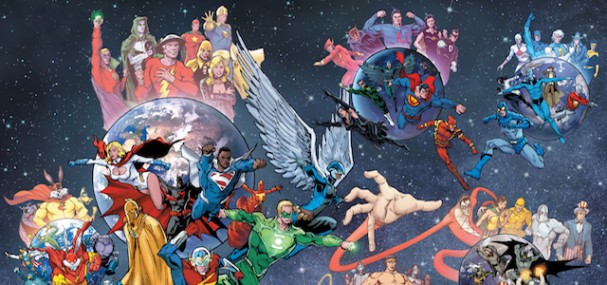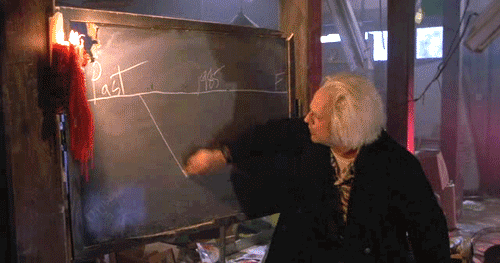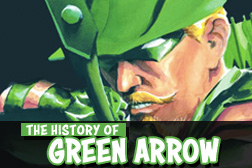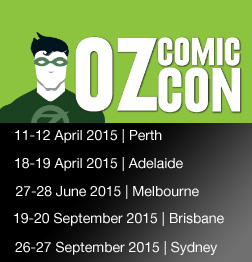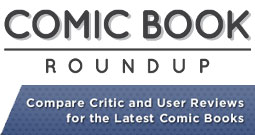During our discussion of Marvel’s Secret Wars events in a recent episode of the show, David Longo remarked that the one thing both DC and Marvel need is a little bit more status quo. Not for nothing: even with the New 52 and the All-New Marvel NOW! respectively, both houses have had their recent share of muddied continuities, contradictory arcs and patchwork events interrupting ongoing stories. So it’s somewhat pleasing that the conclusion to CONVERGENCE #8 restores something of that order to the DC Universe. Suffice it to say, this piece contains MAJOR SPOILERS around the conclusion of CONVERGENCE.
Convergence in a nutshell
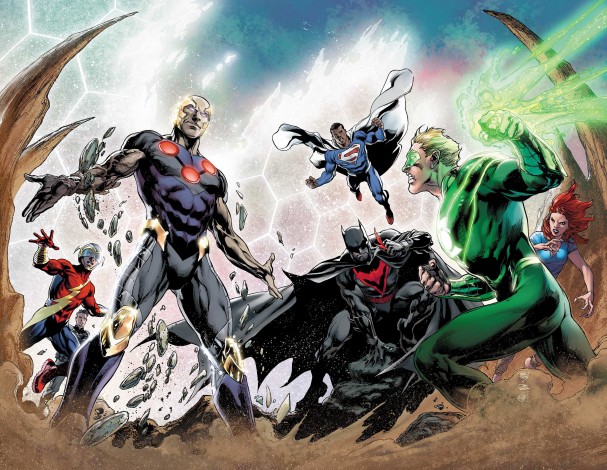 Coming straight off the back of The New 52 Futures End and Earth 2: World’s End, CONVERGENCE concludes after a two month event of characters from various DC universes and eras fighting for supremacy after they were brought together on a planet by the being Telos.
Coming straight off the back of The New 52 Futures End and Earth 2: World’s End, CONVERGENCE concludes after a two month event of characters from various DC universes and eras fighting for supremacy after they were brought together on a planet by the being Telos.
The penultimate issue saw Zero Hour‘s Parallax killing the villain Deimos, the character who has been ultimately orchestrating the event. Once his temporal energy was unleashed, the planet became a bullet that threatened to shatter the Multiverse. Brainiac, the ultimate progenitor of this madness, realises the error of his ways and attempts to send the heroes back to their own time periods and restore reality. However, the Crisis of Infinite Earths (or the “First Crisis”, henceforth simply “Crisis”) proves to be too strong. “If it is not changed,” Brainiac explains, “the Multiverse will once again collapse into one universe.” (A full review by Richard can be found over at Newsarama).
DC’s Crises: a history
In 1961, the Golden Age Flash (Jay Garrick) met the rebooted Silver Age Flash (Barry Allen) for the first time in The Flash #123. Most agree that this was the moment the Multiverse was born, allowing DC to continue publishing older characters as the Justice Society of America on a separate Earth to their top-tier Justice League of America. From 1963’s “Crisis on Earth-One” to 1984’s “Family Crisis,” the JLA and JSA met every year to fight forces from an infinite Earths.
However, saddled with continuity issues, 1985’s Crisis on Infinite Earths cleaned this up, collapsing all universes into a single linear one. Zero Hour: A Crisis in Time (1994) tied up some of the lingering problems left in the post-Crisis world. Infinite Crisis (2006) restored pre-Crisis concepts with a Multiverse of 52 worlds. Following Flashpoint (2011), DC did another hard reboot of their universe with an alternate timeline, but slowly unveiled the Multiverse, documenting The New 52 worlds in Grant Morrison’s The Multiversity (2014 – 2015).
For more information, check out Crisis Explained.
“Each world has evolved but they all still exist.”
So what does this all mean? The short version is that The New 52 is over, and an older Multiverse (see insert on the left) has returned. Yet there are some definite departures from the Multiverse that existed prior to CONVERGENCE.
The evolved Multiverse and New Earth-2
When we talk about The Multiverse, we talk about the infinite pre-Crisis number of Earths, the “Hypertime” notion that all realities are real, and the more fixed iteration where there are 52 worlds in the Multiverse. What appears to exist now at the end of CONVERGENCE is something of a hybrid, but essentially returns us to the notion of Hypertime.
Hypertime, as Mark Waid and Grant Morrison simply put it, argues that “It’s all real.” Originally offered up in The Kingdom (1999), the follow-up to the classic Elseworlds series Kingdom Come (1996), as an one-size-fits-all explanation to continuity discrepancies between pre-Crisis timelines. For example, with Hypertime no version of Batman – be it the Bob Kane/Bill Finger Batman from the 1930s and 1940s, the camp Adam West version from the 1960s, the Bruce Timm animated series, Christopher Nolan’s Dark Knight or Scott Snyder’s New 52 – is the “correct” canonical version. They all exist regardless of the current status quo. The concept went out of favour for a while, replaced and explained less effectively in Infinite Crisis as “continuity waves” resulting from Superboy Prime punching the walls of his extra-dimensional prison. At the end of CONVERGENCE, this notion comes running back into the room with a vengeance.
It seems the moniker “The New 52” was never about the number of comics re-launched in 2011. It was, in retrospect, referring to the New 52 Multiverse and the revised set of worlds that emerged post-Flashpoint. With the end of CONVERGENCE, the New 52 ends as well. In its place is a Hypertime infused Multiverse where both the pre-Crisis Earth-Two sits happily along the vibrational chain from the New 52’s Earth 2. (An alternate view, confusingly, is that the “spirits” There might still be 52 worlds as set out in The Multiversity map (with the addition of New Earth 2 filling in the “?”), but there are an infinite number of possible divergent offshoots, Elseworld stories and alternative times available for writers. In an post-CONVERGENCE interview with ComicBook.com, writer Jeff King explains:
“Convergence speaks to that directly. In his way, Brainiac represents a collected experience of all the creators, and by extension readers, of DC Comics. Ever. I’ve said this a few times during panels and interviews and his is what I meant: Post-Convergence,every character that ever existed, in either Continuity or Canon, is now available to us as storytellers. You may not see them right away, but they are out there. And of course, when you get to the end of Convergence you understand that is more than meta, it is concrete as well.”
If some of the early solicitations are any indication, DC intends to use them as well.
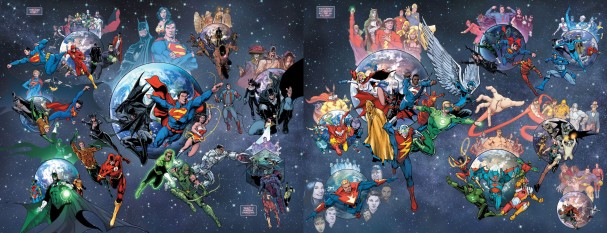
Divergence and the Future
Anybody who has seen Back to the Future II will know there is a tiny problem with some of the time travel logic, especially if we consider the original Crisis “1985A”. However, the ever-flexible notion of Hypertime would appear to allow DC some leeway when it comes to this, and now everything is up for grabs.
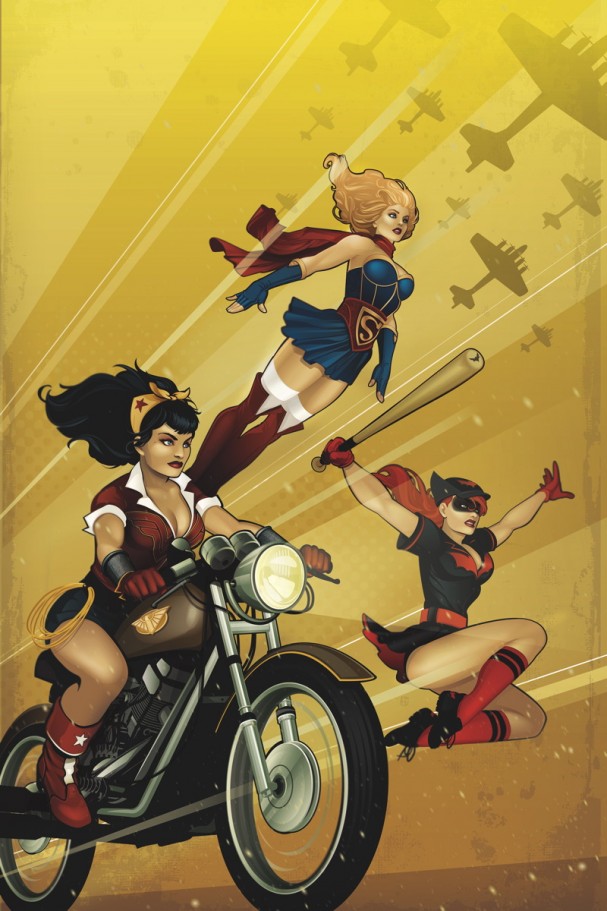 Case in point is the post-CONVERGENCE slate known simply as DIVERGENCE. From 3 June 2015, the DC Comics line will consist of 24 new titles beginning from issue #1, along with 25 ongoing series that will continue their numbering. The new Earth 2: Society by Daniel H. Wilson and Jorge Jimenez will speak directly to the survivors on New Earth 2. Bat-Mite from the 5th Dimension is getting an ongoing series. Batman Beyond, the Batman of the animated series future, is given a title, and so is Bizarro. Long defunct titles such as Prez will get a revival, and the previously deceased members of Garth Ennis and John McCrea’s Section 8 will return for ongoing adventures.
Case in point is the post-CONVERGENCE slate known simply as DIVERGENCE. From 3 June 2015, the DC Comics line will consist of 24 new titles beginning from issue #1, along with 25 ongoing series that will continue their numbering. The new Earth 2: Society by Daniel H. Wilson and Jorge Jimenez will speak directly to the survivors on New Earth 2. Bat-Mite from the 5th Dimension is getting an ongoing series. Batman Beyond, the Batman of the animated series future, is given a title, and so is Bizarro. Long defunct titles such as Prez will get a revival, and the previously deceased members of Garth Ennis and John McCrea’s Section 8 will return for ongoing adventures.
Perhaps the most clear example of this direction comes from the August solicitations, with the Bombshells ongoing series announcement. Based on the line of collectible statues, it promises to showcase an “alternate reality where the Second World War is fought by superpowered women on the front lines and behind the scenes.” Prior to CONVERGENCE, this story may have been simply considered as part of a different arm of merchandising. Now it’s part of the rich tapestry that makes up the Multiverse.
As always, it’s important to exercise caution in the lead-up to any sweeping changes. Fans don’t have to be blessed with long memories to recognise similar waves to Flashpoint not four years ago. Others may feel as though no major event will ever count. Everyone else might just be able to look forward to a whole new wave of comics, free from the prescriptive shackles of a single continuity. The New 52 is dead. May the Multiverse reign eternal.
The tl; dr version
- CONVERGENCE eliminated the collapse of the pre-Crisis Multiverse. All destroyed Earths now exits again
- The New 52 is finished
- DC now has an “evolved” version of the Multiverse, including a New Earth 2 and the original pre-Crisis Earth 2
- Stories from any time and place are now possible, including past continuities, skewed timelines and Elseworlds
- It’s all real
Want to keep up with all the latest? Got a comment? Start a conversation below, or take it with you on Behind the Panel’s Facebook and Twitter!
If you are an iTunes user, SUBSCRIBE to our weekly podcast free here and please leave us feedback. That’s how we get more attention on the Interwebs and move up the iTunes charts!

